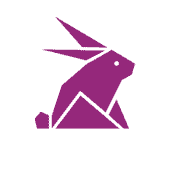The Iterative Path to Success
Heads Up: This the final piece of a 5-part series. You’ll get the most from it if you start at the beginning.
Honing a powerful offer takes time, and data. That’s why we want to learn from our friend Jasper. He approaches asset creation as a series of refining tests because he’s invested his time in learning about lean/agile concepts like those we’ve discussed earlier in this series.
Jasper puts them into practice because he understands how those mindset shifts apply to his business.
He recognizes the power of running lean and embracing nuance so, he gathers as much data as he can from his testing efforts and he asks specific and insightful questions of it, which helps him better calibrate the aim of his offer over time.
He knows there are countless ways of gathering direct and indirect feedback — so, rather than wondering about what to do next, he leans on Systems Theory, and uses his data to direct the next small, precise, iterative test.
He doesn’t scour the internet for marketing tips because he knows we can’t just take the best parts from the best cars and bolt them together to make the ultimate best car.
It won’t run.
All systems (including marketing systems) are more than a collection of parts. They are the emergent properties resulting from the interactions between those parts.
Read that again.
Jasper’s mental framework — rooted firmly in first principles — enables his business to make only what is widely valuable to his tribe of customers and prospects.
The iterative nature of the feedback loop principle provides Jasper with clear data about what is needed, by what portion of the audience, how urgently, how often, and so much more.
That growth-driven feedback loop is always running.
- Constantly gaining data.
- Constantly updating itself.
- Constantly checking the data to see which changes to keep, and which to revise.
Jasper doesn’t have to worry about knowing what he needs, or what to do next, because (if he pays attention and trusts it) the data will tell him.
As he listens and implements, the asset he creates will grow and change accordingly.
In contrast, our other entrepreneur, Larry, believes that his success is based on some elusive combination of right idea, right place, and right time.
It is a superstitious and tragically common mindset.
The end result is a familiar and deadly dish of perfectionism and procrastination.
In Company of One, Paul Jarvis has this to say:
Often, complexity can creep in right from the beginning - when you're just thinking about starting a new business. You begin to assume that your business requires "essentials" like office space, websites, business cards, computers, fax machines (just kidding), and custom software solutions. In reality, it's usually possible to start a business - especially the freelance or startup kind - just by finding and then helping a single paying customer. Then doing it again, and again. And only adding new items or processes to the mix when they are absolutely required.
If you have an idea for starting a business that requires a lot of money, time, or resources, you're most likely thinking too big.
Once you see the first principle at work in what Mr. Jarvis is saying, you won’t be able to unsee it — and It can affect the way you look at business forever.
The scope and depth of the thing you want to make can grow, adapt, change, and evolve based on your goal, and what it encounters in reality.
The benefits of learning from that approach are profound.
Operating from a data-driven philosophy ensures we stay wise with our resources while building any offer, product, site, business, etc.
We want to begin our process by accepting the inevitability of being wrong in our assumptions because, we know not every point of interest (on the map that is our data) will lead to gold.
That’s the big “why” powering Jim Collins “bullets before cannonballs” idea.
This growth-driven-feedback-loop concept exists in virtually every industry on the planet today because proper testing and validation keeps companies safe from over-investing time and money in unprofitable areas.
Jasper’s version of Rapid Prototyping is powerful because of the inherent need for testing and honing when developing a product. The goal is to stay agile while searching for your product-market-fit (PMF).
I’ll come back to that term in a moment.
It is important to note that Jasper’s approach uses simple, inexpensive tactics (like a/b experiments, etc.) to generate strong, valuable insights.
The same simple tactics also help avoid costly mistakes during the development of any given asset.
Offers are rarely born perfect (or successful), and they need to be tested and honed before they can achieve anything close to their peak performance.
Jasper knows that fact means he will be wrong a lot, and he (like our earlier pirate ship example) trusts that eventually he will find his target in the fog.
We can trust Jasper’s approach isn’t some fad tactic because, at the most basic level, he’s leveraging the natural mechanics of the “survival of the fittest” principle to build his best, most profitable assets.
By reasoning from that fundamental first principle, Jasper has learned to break down complicated problems into their most basic elements, and then reassemble them from the ground up.
(If you’re programmer, you already have that skill.)
Jasper simply applies this skill in all other areas of his life as well, including his asset creation.
Thankfully, doing so is a choice available to everyone.
Larry can choose to do the same.
He can learn to adopt Jasper’s mindset.
Rather than worrying about writing the about page, or launching the sale on his shop, Larry can focus on building a stronger foundation first.
Rather than working from his gut-feeling or hunch, he can gather, review, and understand the data his efforts can generate for him.
Rather than thinking of the asset as the finish line, he can acknowledge that it is only the beginning.
All offers (products, services, etc.) generate revenue best when they are positioned well in relation to the pocket of people they aim to serve.
That’s the target to aim at.
In a broad sense, that target is called product-market fit, and Marc Andreesen, the famous American entrepreneur, has this to say about it:
I believe that the life of any startup can be divided into two parts: before product/market fit (call this "BPMF"), and after product/market fit ("APMF")
When you are BPMF, focus obsessively on getting to product/market fit.
Do whatever is required to get to product/market fit. Including changing out people, rewriting your product, moving into a different market, telling customers no when you don't want to, telling customers yes when you don't want to, raising that fourth round of highly dilutive venture capital -- whatever is required.
(emphasis mine)
The iterative feedback loop is the vehicle we use to obsessively focus on product-market fit. We use it, at all levels, to discover and test “whatever is required” of *any* asset — and we perform these tests relentlessly.
We test with inexpensive bullets, and when we find the target we want…

For those going the DIY route, you’ll pay for your growth as you need it, not before.
If it costs too much, you’re probably thinking too big.
Once you’re making money, reinvest it in the business.
We can reach a better product-market fit more efficiently when we leverage our MVP, and the data from it, to drive our decisions and our growth. Principles like this aren’t just for big companies with bigger budgets either. They work universally.
At Wabbit, we leverage this stuff in everything we do — from marketing strategies to development work — and the principles we share here make all the difference.
More than just profitable assets, this approach is the most effective way to build a durable, sustainable business.
It works in every industry you can imagine.
Regardless of project, break the process into phases that are designed specifically to be cycled through quickly, and frequently, funding themselves through their own demonstrated profitability.
You can see detailed examples of this approach throughout our case studies.
We find that a monthly rhythm works best for us. Start there, but remember that ultimately, just like any other skill, you’ll find your own best cadence as you practice the method more.
If you want to learn more about why rapid prototyping works so well, we encourage you to visit our page on Systems Thinking. That topic is universally important anyway, so it would be good to understand it fully.
Before we close this series, remember: when we say “Rapid Prototyping” we are giving you a term that transcends industry boundaries and encompasses a flat-out smarter approach to product design overall.
It eliminates the headaches.
It eliminates the risk.
It makes your assets steadily more useful to your audience, and therefore more useful to your business.
If you want the biggest return on your investment, the lowest barrier to entry for testing an idea, and the most efficient use of your time and money… leverage the rapid approach.

